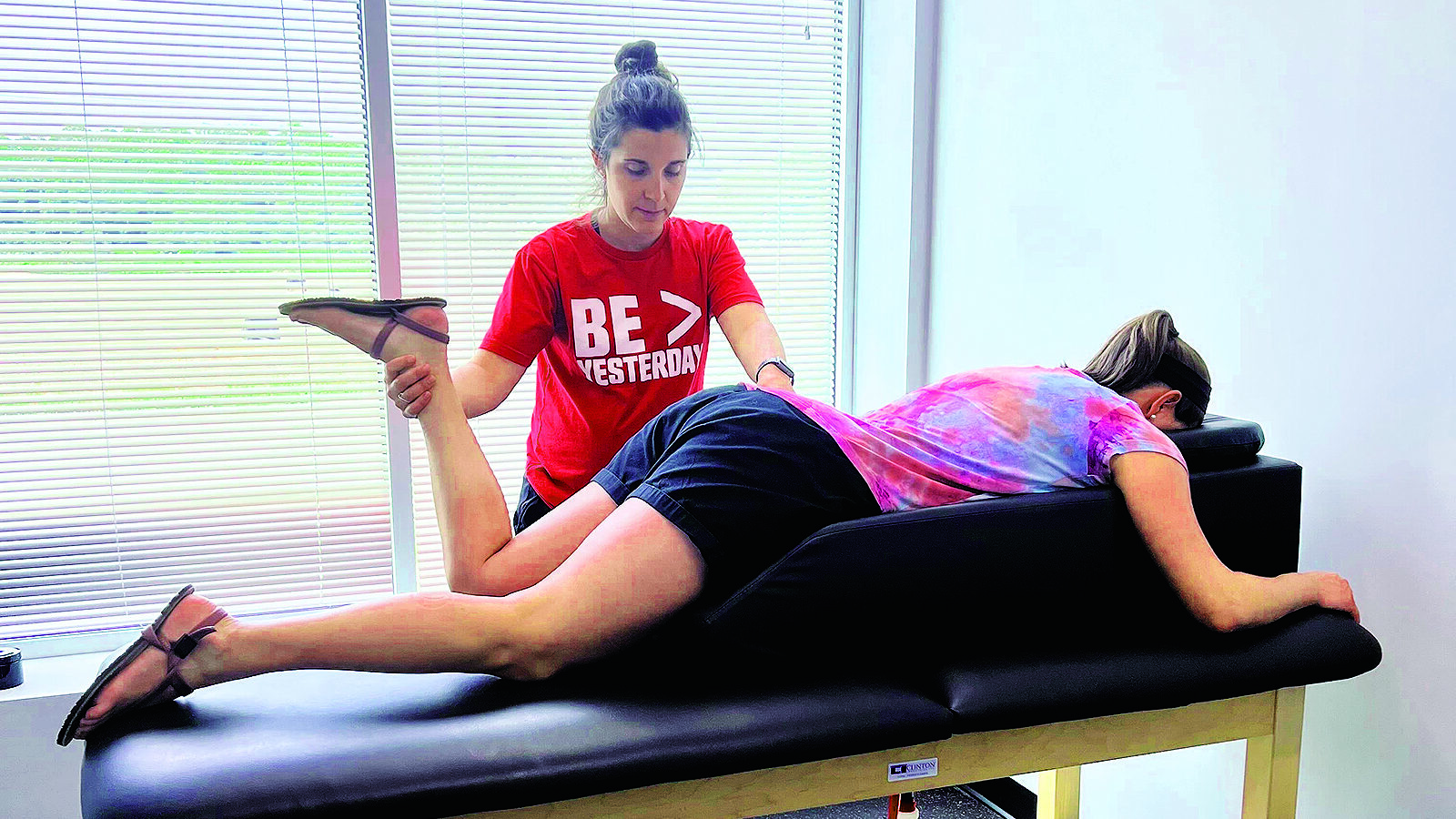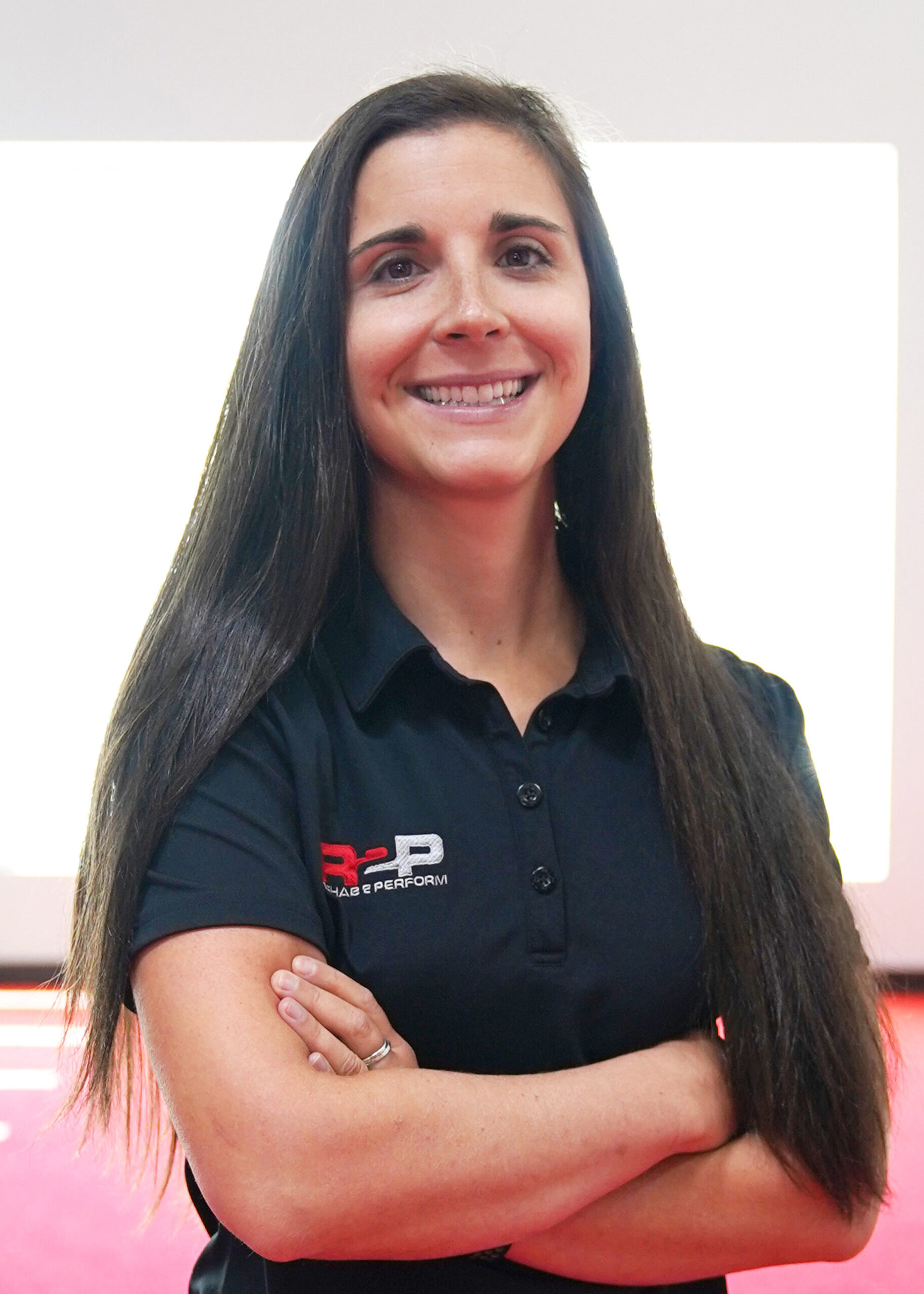What Is Pelvic Floor Physical Therapy?

A Physical Therapist & Mom’s Perspective on Pelvic Health
As a pelvic health physical therapist at Rehab 2 Perform—and a mom myself—I get it. Our bodies go through a lot, whether it’s pregnancy, childbirth, workouts, or just the daily grind of life. We juggle careers, fitness goals, and family responsibilities, all while trying to feel strong and confident in our own skin.
What I’ve learned—not just as a PT, but as a mom—is that pelvic floor health is at the core of it all. These muscles impact everything from how we move to how we feel during exercise, in daily activities, and even in moments of rest.
Unfortunately, too many women and active adults ignore symptoms like leakage, pressure, or pain because they assume it’s “normal” or “just part of having kids.” I’m here to tell you—it’s common, but not normal. And more importantly, it’s fixable.
Let’s dive into what pelvic floor physical therapy is, how it works, and why it might be exactly what you need to feel your best.
What Is Pelvic Floor Physical Therapy?
Pelvic floor physical therapy (PFPT) is a specialized type of physical therapy that focuses on the muscles, ligaments, and connective tissues supporting your bladder, bowel, and reproductive organs. These muscles play a key role in:
- Core strength and stability
- Bladder and bowel control
- Sexual function and comfort
- Postpartum recovery and pelvic organ support
In simple terms, your pelvic floor is like the foundation of a house—if it’s weak or not functioning properly, everything else (your core, hips, and back) has to work harder to compensate. Over time, this can lead to discomfort, pain, and even injuries.
Signs Your Pelvic Floor Needs Some TLC
I see a lot of women who come in with aches, pains, or concerns that they never realized were connected to their pelvic floor. Some common signs that pelvic floor therapy could help include:
- Leaking when you run, jump, or sneeze (even if it’s just “a little”)
- Pelvic pain or discomfort that comes and goes throughout the day
- A constant feeling of pressure or heaviness “down there”
- Lower back or hip pain that never seems to go away
- Pain with intimacy or discomfort using tampons
- Struggling with core activation—feeling like your abs are “shut off” during workouts
If any of these sound familiar, please know you are not alone—and you don’t have to live with it. Pelvic floor physical therapy is a game-changer.
Why Pelvic Floor Therapy Matters—Especially for Active Moms
As a mom who loves to stay active, I know how hard it can be to feel like your body is fighting against you after having kids. You want to get back to running, lifting, or even just playing with your little ones without worrying about leaks, pain, or strange sensations.
The good news? Your body is strong and capable of healing—you just need the right plan.
1. Stronger Core, Better Performance
Your pelvic floor works with your core muscles, not separately from them. When they are properly activated, you’ll:
- Feel more stable and powerful in your workouts
- Reduce stress on your lower back and hips
- Move with better posture and confidence
2. Say Goodbye to Leaks & Embarrassment
Let’s be real—peeing a little when you laugh, jump, or lift is not just a “mom thing.” It’s a sign your pelvic floor isn’t working optimally. The good news? This is highly treatable with the right exercises and strategies.
3. Postpartum Recovery Done Right
Many moms are cleared for exercise at six weeks postpartum—but that doesn’t mean your body is ready for everything or isn’t ready for something before 6 weeks. Pelvic floor PT helps you restore core strength, prevent prolapse, and safely return to exercise without setbacks.
4. Less Pain, More Confidence
If you’ve been dealing with lingering lower back pain, hip tightness, or discomfort “down there,” your pelvic floor might be a missing piece of the puzzle. Strengthening and balancing these muscles can make a world of difference.
What to Expect During a Pelvic Floor PT Session
I know the idea of pelvic floor therapy can feel intimidating—especially if you don’t know what to expect. At Rehab 2 Perform, we keep things comfortable, professional, and tailored to you.
Your First Session Includes:
- A movement assessment to see how your core, hips, and pelvic floor are functioning
- Education on how your pelvic floor is affecting your symptoms
- A personalized plan with exercises, breathing techniques, and functional movement training
No awkward experiences. No one-size-fits-all programs. Just real solutions to help you feel your best.
Why Choose Rehab 2 Perform?
As a pelvic health specialist and a mom, I understand firsthand how important it is to feel strong, capable, and in control of your body. At Rehab 2 Perform, we take a science-based, movement-focused approach to pelvic health that’s designed for real life.
- We go beyond Kegels – Pelvic health is about more than just squeezing muscles. We focus on functional strength and movement.
- We understand active adults and moms – Whether you’re training for a race or chasing after toddlers, our approach fits your lifestyle.
- We take a whole-body approach – Your pelvic floor doesn’t work alone. We look at your core, hips, posture, and movement patterns to create lasting change.
Ready to Feel Like Yourself Again?
If you’re dealing with leaks, discomfort, core weakness, or pain that won’t go away, now is the time to take action.
Pelvic floor physical therapy is not just for postpartum moms—it’s for any woman who wants to move, feel, and live better.
Let’s get you back to doing what you love—without worry or discomfort.
- Dr. Jamie Schindler, DPT, SCS, CSCS, Area Director- Annapolis & Gambrills

About Rehab 2 Perform
Rehab 2 Perform is a leading physical therapy and sports rehabilitation company dedicated to helping clients achieve optimal performance in their daily lives, whether they are athletes, weekend warriors, or individuals recovering from injury. With a team of highly skilled professionals across 11 state-of-the-art locations (soon to be 12), Rehab 2 Perform offers a personalized, evidence-based approach that emphasizes active rehabilitation and functional fitness. Find a Location near you, or Schedule Here.
